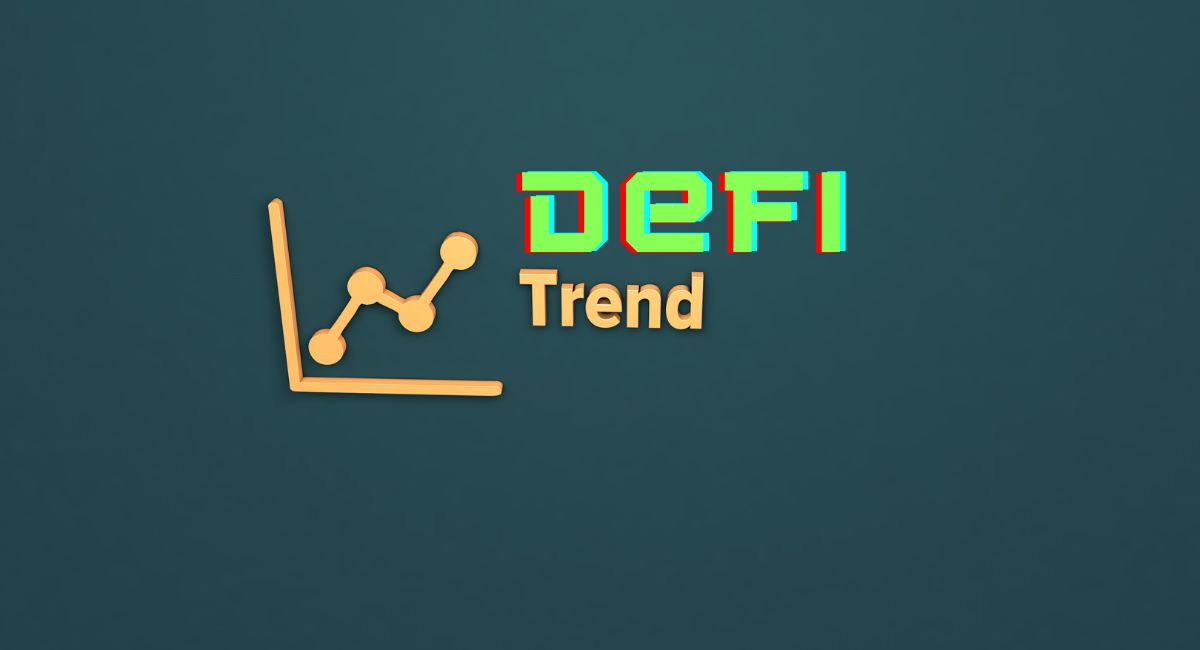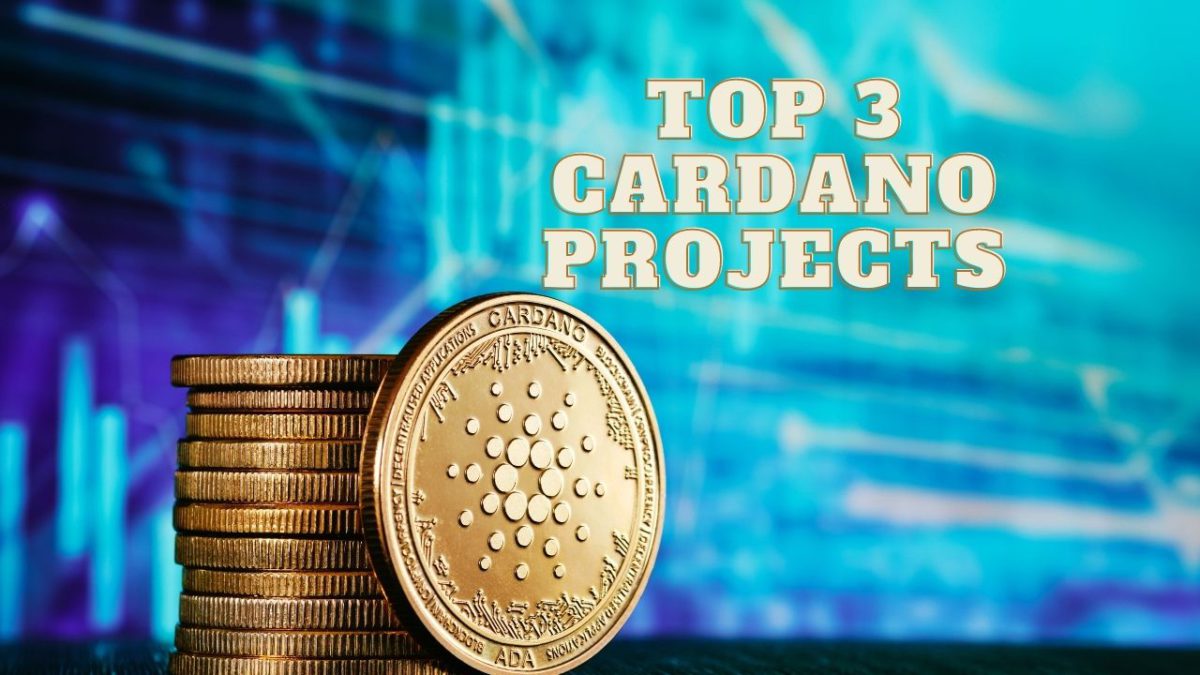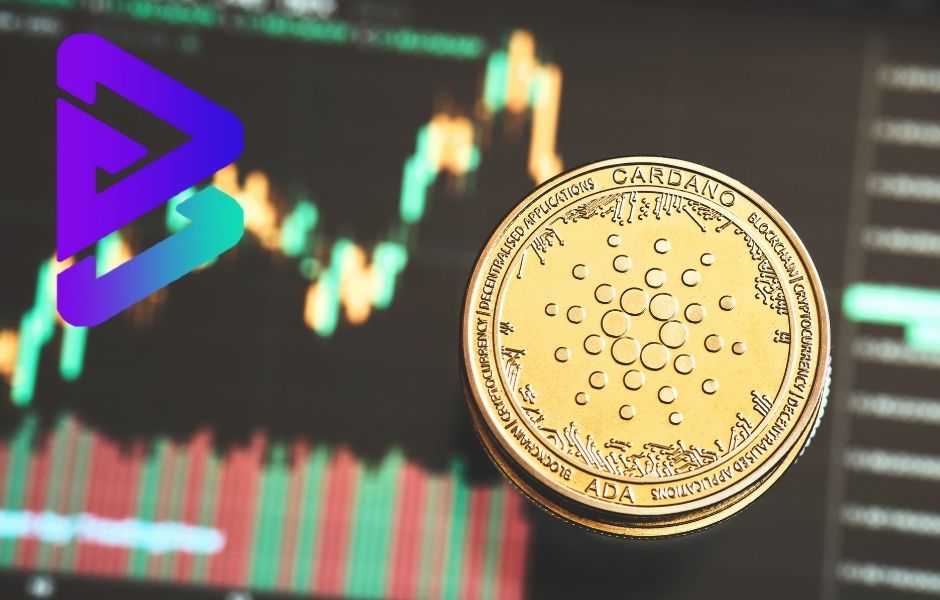Top 7 DeFi Trends in 2023 To Watch For Crypto Investors
Due to the development of blockchain-based projects like NFTs, GameFi, Metaverses, and of course, Decentralized Finance, the cryptocurrency sector is growing swiftly (DeFi). Let’s define DeFi and look at some of the anticipated DeFi trends for 2023.
Describe DeFi.
A distributed ledger is used by decentralised finance (DeFi), a fintech solution, to enable financial transactions without the need for centralised financial institutions like banks and finance companies. As a result, there is no need to pay such organisations a service fee for each transaction because all transactions are recorded on a public and irreversible ledger.
In order to borrow, save, lend, or swap cryptocurrencies without requiring KYC, all you need is a phone and an internet connection. This results in greater ease, better integration, and higher transparency, which are some of the well-known benefits of DeFi. The expansion of DeFi protocols has also facilitated the establishment of numerous new crypto businesses. The sector is expected to rise from $11.78 billion in 2021 to $231.19 billion in 2030, a nearly 20-fold increase as a result of the huge growth in demand.
DeFi Trends in 2023 to Watch
Given all the spectacular events that occurred in 2022 and the years before, we anticipate that 2023 will be equally exciting, if not more so. Here are a few emerging trends to keep an eye on.
The Reemergence of DEXs
Decentralized applications (dApps) are programmes created on top of blockchains that are often open, independent, permissionless, and non-custodial, which means they do not maintain control over their users’ money. Most trading takes place in decentralised exchanges (DEXs), which are dApps and an essential component of DeFi.
Contrastingly, centralised exchange (CEX) programmes are typically permissioned and custodial, which means that the CEX holds and controls the users’ money. Unluckily, several centralised exchanges (CEXs), notably Sam Bankman Fried’s FTX, went out of business in 2022. Many consumers are terrified about losing their money on CEXes due to the lack of transparency and control on these centralised platforms.
DEXs have experienced a resurgence as a result, and as they are the obvious replacement for users switching to centralised exchanges, they offer enormous development potential. DEXs provide users complete control over their funds rather than giving them to a company, despite the fact that they might be more sophisticated and need more care from the normal user because they must secure their own private keys.
GMX’s GLP token and GNS’s DAI vaults functioning as the counterparty liquidity, as well as Perp v2 and Rage Trade leveraging on top of Uniswap v3’s focused liquidity mechanics to improve the liquidity and trading experience, are just a few of the fascinating liquidity mechanics we’ve seen in 2022. By TVL, Uniswap continues to be the top DEX, and in 2022, its market cap has fared better than ETH’s. The release of Uniswap v4 with even more exciting features in April 2023, after their licence for Uniswap v3 expires, might mark a turning moment for the DEX market.
Decentralized Options and Derivatives
Interest in blockchain derivatives has surged along with the resurgence of DEXs. According to notional value and volume, derivatives are one of the world’s largest marketplaces. The fact that derivatives frequently include leverage is what makes them so well-liked. Perpetual contracts and options contracts are two kinds of derivatives. On some of the most well-known perpetual DEXs, these products provide consumers leverage of up to 50x. A portion of this volume may move to on-chain derivative DEXs if consumers become more sceptical of CEXs. As more and more features are released to improve trading on-chain derivatives, the upward trend in volume and user acceptance has a chance to continue. Options trading is still gaining traction, with protocols like Panoptic Options and Dopex proposing unique ways to enable users to trade options. Perpetual trading has already gained popularity.
Options may become more widely used in 2023 as a result of the emergence of a new narrative termed “OpFi,” which stands for “DeFi infrastructure powered by options.”
Blockchain-Based Assets from the Real World
Actual-world assets (RWA) have enabled enormous amounts of liquidity and utility that would have otherwise been impractical or impossible to achieve in the real world. Despite the potential for blockchains to increase transparency and liquidity, tokenizing real assets hasn’t proven very successful. One explanation could be that the vast majority of real-world assets have a legacy market that, while complex, is “good enough” and has existed for a long time.
Since they are a more recent asset class, carbon offsets might be an exception to this rule. For carbon, there isn’t a legacy system that is so firmly in place that it cannot be altered. The development of web3 infrastructure to bring carbon offsets on-chain may very well be the first actual success story of the tokenization of real-world assets.
Large players in the DeFi lending sector, like MakerDAO, have also partnered with conventional banks to make loans with RWAs as security and established rules allowing them to invest in US business and Treasury bonds. Currently, the company holds approximately $500 million in US Treasury bonds or 57% of MakerDAO’s revenue.
One of the most realistic use cases for DeFi is brought together through partnerships with banks and actual companies. Another example is Goldfinch, a decentralised global credit protocol that enables users to lend their USDC to legitimate businesses and has maintained revenue growth throughout the bear market. To date, about $100 million in loans have been made, generating real yield outside of the cryptocurrency industry, albeit with some risks due to under-collateralization and the possibility of bad debts.
RWAs are already viewed by many in the industry as an excellent way to merge traditional institutions with DeFi liquidity. Thus in 2023, more people are likely to engage in these practices. In addition, the blog of Vitalik Buterin expresses his enthusiasm about RWAs and claims that “the principle underpinning stablecoins can be applied to other real-world assets,” such as DAO-governed stablecoins backed by real-world assets.
Development of CBDCs
Real-world fiat currencies transitioning to the digital space, often known as central bank digital currencies, are essential to any discussion about real-world assets (CBDCs). In contrast to commercial banks, central banks issue digital currencies known as CBDCs. Additionally, it is a central bank liability valued in the nation’s currency.
According to the Atlantic Council think tank, over a hundred countries are allegedly actively looking at CBDCs in the research and development stage. While several countries, including China, India, and Thailand, are still in the pilot stage, some nations, like Nigeria and the Bahamas, have already launched their CBDC programmes.
More than $14 billion in transactions have been made using the digital yuan in China, which has had the most success. Although they increased by a record 154% in 2020, overall volumes have climbed only 14% since then. With the introduction of the e-rupee, India is one of the more recent entrants in the CBDC competition. India will serve as a case study for the implementation of a large-scale CBDC effort because it is the largest democracy in the world and has a sizable crypto audience.
Despite the fact that CBDCs are frequently discussed, there has not been much CBDC adoption. This is partially due to the similarity between digitalized fiat currencies and CBDCs from the consumer’s perspective. They are backed by their governments and are quick and cost-free. The advantages of CBDCs include rapid international transactions made possible by blockchain technology and the ability for people without bank accounts to utilise them still if they have phone and internet access.
Additionally, governments use some worrying strategies to promote adoption, like Nigeria’s proposal to charge exorbitant fees for ATM cash withdrawals. CBDCs give governments authority over the money of the people they are responsible for, which may not be well welcomed by the majority of people unless the advantages outweigh the drawbacks.
It’s conceivable that CBDC technology will advance in 2023 and that we’ll learn more about how various demographic groups utilise and respond to CBDCs. In addition, users accept centralised and decentralised stablecoins well and acknowledge them as having one of the finest product-market fits because they are currently available, widely used, and highly liquid in DeFi as the primary denomination for prices. Therefore, it is doubtful that CBDCs will ever surpass stablecoins.
Derivatives with Liquid Staking (LSDs)
Speaking of liquidity, one of the next major Ethereum events after the Ethereum Merge is the Shanghai upgrade, which will allow staked ETH to be converted back into liquid ETH in 2023. There is no method for staked ETH to be liquid prior to the Shanghai upgrade. So, starting with ETH, Lido popularised liquid staking derivatives (LSDs). To earn ETH staking incentives and acquire stETH, a liquid token that reflected their staked ETH tokens, users could deposit ETH with Lido. In place of ETH lying around while being staked, ETH can then be used in DeFi for trading, lending and borrowing, and liquidity provision.
Numerous liquid staking providers started to develop, providing liquid-staked versions of ATOM, OSMO, and other well-known Cosmos proof-of-stake (PoS) assets as part of the liquid staking derivative trend. Despite the fact that staked ETH cannot be withdrawn, especially with Lido, the chart below shows that the amount of ETH being staked has continued to grow steadily.
Continued Cosmological Growth
In the Cosmos ecosystem, which is exclusively made up of proof-of-stake networks with governance assets that are idly staked to provide the network with security, the surge in popularity of LSDs is extremely apparent.
Multiple liquid staking providers started operating in 2022, which helped free up the capital of these staked assets and sparked an increase in DeFi operations. But more than that, Cosmos app-chain solutions have demonstrated to be a viable scaling solution, luring dApps over as DeFi develops methods to grow. Despite the present bear market, Cosmos has maintained a strong number of active users on its existing dApps. DEXs like Osmosis, for instance, have more than 100,000 active users each month.
Exchanges with Central Limit Order Book (CLOB) are the best chances for this. We expect to see spot and derivative exchanges built as app chains to take advantage of lower fees and latency, a trend that was started by dYdX. The Cosmos SDK, which enables the development of a customizable technical stack that can be adapted to the DeFi protocol’s requirements, makes app chains so alluring.
Interchain Security (ICS), a sort of shared security where new chains would use existing ATOM validators to secure the chain rather than building up their own validator set, is one of the significant upgrades coming to Cosmos Hub. The value accrual to ATOM stake is increased as a result of this tradeoff, and new applications are free to concentrate on providing improved user experiences and a dedicated execution environment.
Interchain Accounts (IA), which will be available in 2023 and make it simpler for Cosmos dApps to speak with one another and build a more balanced ecosystem of dApps, are anticipated to assist additional app chains in emerging and cooperating more effectively, which may enable Cosmos to expand even further. Overall, it seems like Cosmos will have an exciting year.
Also, read – 7 Tips On How Cryptocurrency Marketers Should Stay Updated About DeFi
Layer 2s are still gaining ground.
Due to the high gas costs and lengthy confirmation times associated with transactions on Ethereum during times of high network activity, L2 rollups were created. These issues led to gas fees of over $200 per transaction and lengthy confirmation times.
Rollups are layers that handle transaction execution and order, whereas Ethereum, the L1, handles consensus and data availability. TVL and DeFi activity has increased across L2 ecosystems as a result of the debut of Optimism’s OP token, with Arbitrum now dominating TVL. Although Ethereum gas fees have decreased recently, most DeFi activities still cost a couple of dollars, which is far more than the cents that L2s currently cost.
Additionally, it’s possible that L2s will keep expanding as trading activity; TVL from Ethereum L1 and other capital currently residing in EVM chains will move to L2s due to the high price of ETH gas, leading to overall sustainable growth in L2 ecosystems in 2023.
Conclusion
One of the most intriguing developments in financial technology today is DeFi, which has the potential to create a rival financial centre with excellent security, openness, data integrity, and accessibility. The past few years can be seen as the beginning of a cycle for DeFi, and just as the internet took some time to take off and was at one point even written off as a fad before it was widely adopted, DeFi is anticipated to go through several cycles of innovation and failure before it has the opportunity to develop into the game-changing technology that is intended to be.
Thus, this bear market is a fantastic opportunity for the market to clear away as much of the froth and fluff that resulted from the beginning boom of DeFi and assess whether tendencies endure. For long-term DeFi investors who are serious about the space and believe that it will continue to develop for many years to come, patiently researching during a bear market can offer clearer insights into trends.
Stay informed with daily updates from Blockchain Magazine on Google News. Click here to follow us and mark as favorite: [Blockchain Magazine on Google News].
Get Blockchain Insights In Inbox
Stay ahead of the curve with expert analysis and market updates.
latest from tech
Disclaimer: Any post shared by a third-party agency are sponsored and Blockchain Magazine has no views on any such posts. The views and opinions expressed in this post are those of the clients and do not necessarily reflect the official policy or position of Blockchain Magazine. The information provided in this post is for informational purposes only and should not be considered as financial, investment, or professional advice. Blockchain Magazine does not endorse or promote any specific products, services, or companies mentioned in this posts. Readers are encouraged to conduct their own research and consult with a qualified professional before making any financial decisions. The featured image used is just a creative depiction of the title and it does not intend to hurt sentiments of any person or institution. If it hurts anyone sentiments, please do not hesitate to reach out to Blockchain Magazine.

 Bitcoin
Bitcoin  Ethereum
Ethereum  XRP
XRP  Tether
Tether  Solana
Solana  Dogecoin
Dogecoin  USDC
USDC  Cardano
Cardano  Lido Staked Ether
Lido Staked Ether  TRON
TRON  Chainlink
Chainlink  Avalanche
Avalanche  Wrapped stETH
Wrapped stETH  Sui
Sui  Wrapped Bitcoin
Wrapped Bitcoin  Toncoin
Toncoin  Stellar
Stellar  Hedera
Hedera  Shiba Inu
Shiba Inu  Polkadot
Polkadot  WETH
WETH  LEO Token
LEO Token  Litecoin
Litecoin  Bitcoin Cash
Bitcoin Cash  Bitget Token
Bitget Token  Hyperliquid
Hyperliquid  Uniswap
Uniswap  Official Trump
Official Trump  USDS
USDS  Wrapped eETH
Wrapped eETH  Pepe
Pepe  NEAR Protocol
NEAR Protocol  Ethena USDe
Ethena USDe  Aave
Aave  Aptos
Aptos  Internet Computer
Internet Computer  Monero
Monero  WhiteBIT Coin
WhiteBIT Coin  Ondo
Ondo  Ethereum Classic
Ethereum Classic  Cronos
Cronos  POL (ex-MATIC)
POL (ex-MATIC)  Mantle
Mantle  Render
Render  Dai
Dai  MANTRA
MANTRA  Algorand
Algorand  OKB
OKB 




